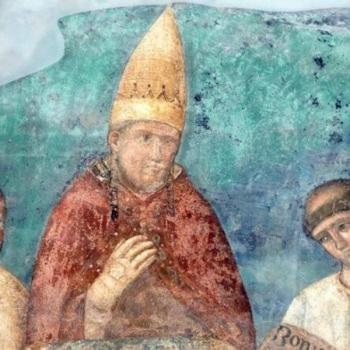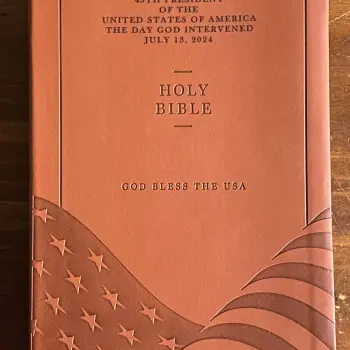Shalom Goldman, professor of religion at Middlebury College, has spent his professional life exploring the intersections between language, religion, imagination, and identity. His courses delve into Islamic history and its relationship with Judaism, Hebrew sacred texts, Arabic literature, Christian-Jewish relations, and the dialogue between the monotheistic traditions. (I, for one, would very much like to enroll in the class he teaches on "The Arabian Nights: Storytelling, Orientalism, and Islamic Culture.")
In his latest book, Jewish-Christian Difference and Modern Identity: Seven Twentieth-Century Converts, Goldman lets the narratives of seven individuals shape the conversation. These lives are the stuff of movies: World War 2 heroism, kidnapping, destitution, faith, dark monastic corners, Nazi horrors, Israeli courts, visions, Zionism, and the ancient rhythms of Jewish ritual. Goldman tells the stories compellingly, letting their disturbing details, spiritual angst, and ultimate disappointments speak for themselves.
Professor Goldman and I spoke together about some of these stories, the meaning they have today for Jewish-Christian relations, and the historical threads of suffering, antagonism, and rapprochement that they reveal. For American Christians, this is a critical topic, something that they understand all too poorly and infuse with theological and political interpretations reflecting their own religious agendas. For contemporary Jews, the struggle to define Jewish identity and align their lives accordingly is increasingly fraught with tensions that confuse as much as they challenge.
Read an excerpt of his book at the Patheos Book Club.
What compelled you to write this book? What do you hope to accomplish through these stories?
Some of my thinking on Christian-Jewish relations was triggered by the constant irritation that the term "Judeo-Christian" causes in scholarly circles. The term itself is a brand rather than a reality, and it's no more than seventy-five years old. The reality is that there has been a two-millennia-old antagonism between Judaism and Christianity, and I wanted to explore that relationship in its modern iteration and see if it had changed in the 20th century.
I also wanted to tell these great stories, and I could have added so many more. My college courses are taught narrative-style, and most of my scholarly work is based on narrative so it seemed best to let these historical characters have the stage.
The big conclusion was that, for close to 2000 years, the dominant opinion among clergy (both Jewish and Christian) and the learned classes of each religion was that the wall between the two faiths was solid and impenetrable. Each community felt that you are either with one or the other, with us or our enemies. This great wall, however, has large cracks in it and some thinkers are wanting to reside on both sides. In the very early church, Christians were Jews, but how long did that dual posture last? I believe it was a very short time, probably by the end of the first century, that it became clear to Jews that to become a Christian was to leave Judaism.
You tell three stories of Christians becoming Jewish, and four stories of Jews becoming Christians. The whole framework of conversion tears open the struggle to understand both one's own spiritual allegiances and the effects these have on others. How do you think these stories inform the contemporary struggle to frame Jewish identity?
In Jewish accounts of conversion to Christianity, the key word is Shmad, apostasy. When a Jew becomes a Christian, he or she is becoming a member of another religion that contradicts Judaism. Classical pre-modern Christianity assumed that Judaism was over; it had fulfilled its purpose. And ever since the days of the early church, Judaism has defined itself against and around Christianity, and then, later, against Islam. These three religious all define themselves against the others. In relation to Christianity, Judaism is the denial of the Incarnation; in relation to Islam, it is the denial that a new prophet came in the 7th century. In fact, the more the sister religions approached Judaism, the more Judaism distanced itself. For example, the more Christians appropriated the Ten Commandments as a central statement of the moral code, the less Judaism did. In Yiddish, Christianity is called "The Dark Impurity," a heresy that the divine incarnated in the human.
So in the stories of Jean-Marie Lustiger, Rabbi Zolli, and Brother Daniel, in particular, you see three Jews who want to become Christian and remain Jewish, taking their Jewishness with them into their new faith. This is anathema to most Jews.





